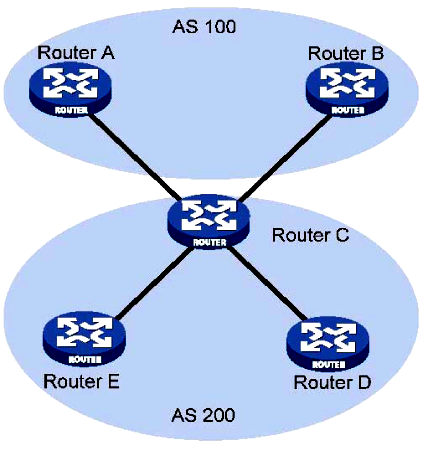Route selection with BGP load sharing
BGP differs from IGP in the implementation of load balancing in the following:
IGP routing protocols such as RIP and OSPF compute metrics of routes, and then implement load sharing over routes with the same metric and to the same destination. The route selection criterion is metric.
BGP has no route computation algorithm, so it cannot implement load sharing according to metrics of routes. However, BGP has abundant route selection rules, through which it selects available routes for load sharing and adds load sharing to route selection rules.
BGP implements load sharing only on routes that have the same WEIGHT, LOCAL_PREF, ORIGIN, AS_PATH, MED and IGP COST.
BGP load sharing is applicable between eBGP peers and between iBGP peers.
If multiple routes to the same destination are available, BGP selects the configured number of routes for load sharing. The maximum number of routes for load sharing is currently 4. Load sharing is enabled by default.

In Network diagram for BGP load sharing, Router D and Router E are iBGP peers of Router C. Router A and Router B both advertise a route destined for the same destination to Router C. If load sharing is configured and the two routes have the same AS_PATH attribute, ORIGIN attribute, LOCAL_PREF and MED, Router C installs both the two routes to its route table for load sharing. After that, Router C forwards to Router D and Router E the route that has AS_PATH unchanged but has NEXT_HOP changed to Router C; other BGP transitive attributes are those of the best route.